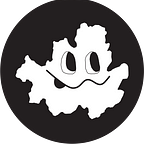Seoul Libre Maps
Maps shape our understanding of the world by mediating space; at the same time, they are a field of complex interaction among capital-, state-, and civil control and decision making. Seoul Libre Maps proposes ways to overcome the social, technological, and political restrictions related to online map-making. Using open data and open-source mapping tools, the project aims to reexamine the role of maps as commons. In doing so, it poses ironic questions on the notions of information and efficacy; takes a critical look at a dependency on a global infrastructure and imagines a decentralizing local agency; and visualizes symbolic and literal disasters in order to narrate alternative urban histories.
Geographic information has traditionally been considered a national asset and key element of national security; the general public did not have easy access to it. For instance, the Soviet Union possessed and managed sophisticated maps of countries around the world including the U.S. but the general Russian public only had access to crude maps. However, accessibility to geographic information has undergone radical improvement thanks to the public release of satellite imagery and the public use of GPS; Google Maps (2005-) and smartphones have quickly and further dismantled the geopolitical authority held by maps during the Cold War. Accordingly, the medium we consume geographic information has also drastically shifted into the current online maps. Still, as one can imagine from Google’s scale of operation, creating and maintaining online maps require a large amount of resources. As Hanbyul Jo points out, what to show or not to show on a map is the decision of a few companies that provide such services, and can involve intense conflicts of interests. While access to geographic information has greatly increased in the transition from Cold War maps to Google Maps, the flow of information is still very much unilateral — only following capitalist logic, instead of that of national security.
On the other hand, collaborative open mapping platforms such as OpenStreetMap (2004-) have coexisted with commercial maps, fostering an alternative track of history guided by the goal of an open, collaborative and extensive geographic information. While Google Maps and smartphones mediated the change in people’s consumption and conception of maps, open data and open source mapping tools enable a more accessible and low-cost map-making. As online maps become more entangled with the everyday contemporary life, people’s capability to actively create and freely utilize maps — and not be limited to the role of passive readers — also becomes more important. Open data, as well as the diverse projects spun off of it, which involve tasks such as improving the accessibility of data sets, rendering data, and building control interfaces, saw the formation of a community consisting of individuals and organizations that create, use and improve such tools. This type of ecosystem balances the excessive control by states and companies over geographic information; such resources improve people’s agency to spread individual stories and to reproduce their knowledge and skills.
Meanwhile, in South Korea, big IT companies are main providers of maps, such as Daum Maps (currently Kakao Map), Naver Map, Kimgisa (currently Kakao Navi), and SK’s T Map — the latter two specializing in GPS navigation. One thing to note is that the government maintains a closed attitude with regards to geographic information, a position heavily guided by a national security rationale. A direct example could be observed in 2016, when the government blocked Google from exporting map data from the country’s physical territory into the company’s servers. Moreover, the public seems to generally agree that such control is justified. This exclusive attitude towards geographic information, combined with the Korean internet’s notable underdevelopment of open source and collaborative platforms, greatly undermines openness and its potential benefits. While the country’s online map services are up to speed with global trends when one thinks of them as commodities, the notion of maps as common goods, easily accessible and contributable by individuals and the civil society alike, is mostly under-discussed in Korea.
Seoul Libre Maps proposes ‘libre mapping,’ one that makes use of open tools such as OpenStreetMap, as an activity seeking to improve such an alienated situation. Libre maps, created by local participants in workshops facilitated by artists, designers, and engineers, exist in diverse forms. In Uninformation Mapping and Video, distorted maps drawn by the people of Seoul are edited so that they contain “correct” spatial information, and a music video is created as a result. Read/Write Offline Mapping imagines open source mapping in a situation where a global internet and data centers are unavailable. Cheonggyecheon, Dongdaemun Gentrification questions how one can map what has disappeared, through mental mapping activities about street vendors in Cheonggyecheon and Dongdaemun areas, and engages in mapping Cheonggyecheon’s dangerous flood gates. These libre maps make extensive use of open source mapping tools, and the results are contributed back into open source communities — providing demo cases of open mapping. Through this process we hope to encourage an independent mapping culture, as well as progressive discussions around maps as public resources.
Commissioned by 2017 Seoul Biennale of Architecture and Urbanism
Curators
E Roon Kang, Wonyoung So
Artists
Minkee Bae, Dan Phiffer, Listen to the City (Eunseon Park, Cheolhun Baek, Choonggeun Yoon, Hyunwook Jang), Hanbyul Jo
Project Manager
Hye Seong Park
Operation Management
Yoo Kyung Lee
Designer
Moonsick Gang
Editor, Translator
Achim Koh
Video Documentation
Sunshine Underground
